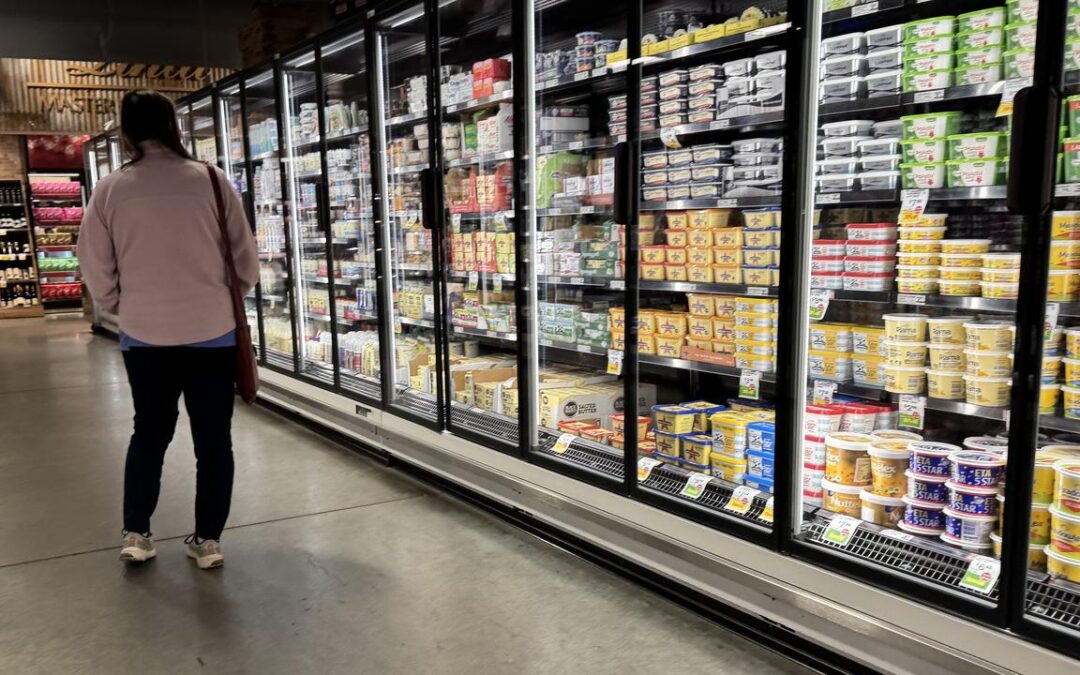
Moves to crack down on supermarket ‘shrinkflation’
Shoppers could get the chance to dob in grocery retailers charging top dollar for shrinking products.
The federal government is exploring ways to ensure consumers get value for their money at the checkout, by strengthening the unit pricing code.
A public consultation kicks off on Monday seeking consumer feedback on the introduction of a new “shrinkflation” notification regime to name and shame brands, as well as a proposal to make unit price displays more readable and impose fines for non-compliant retailers.
Assistant Minister for Treasury Andrew Leigh said clearer information means Australians will be able to spot changes to product sizes and decide if it’s value for money.
“If a chocolate bar loses two squares but keeps the same price, that’s not magic – it’s shrinkflation,” Mr Leigh said.
“We want feedback on what steps we can take next to crack down on diminishing sizes.”
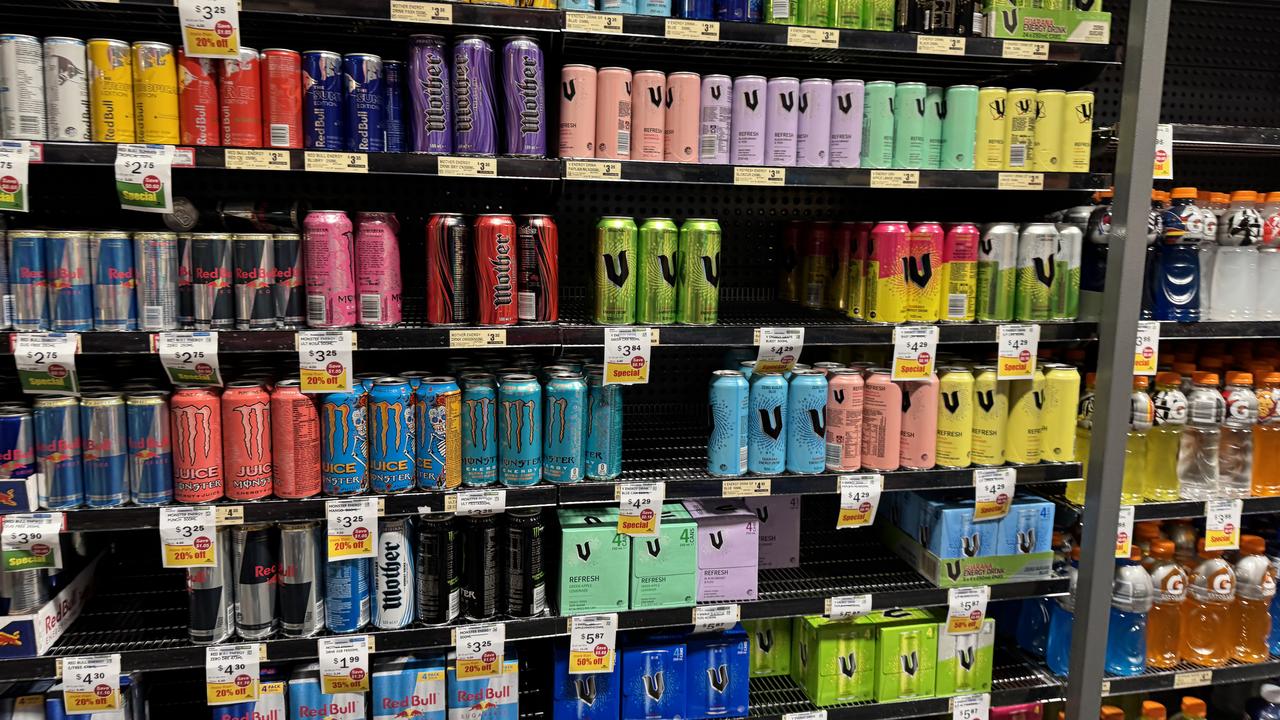
An Australian Competition and Consumer Commission supermarket inquiry report, released in February, recommended that supermarkets publish notifications when product sizes change, but prices remain the same.
Last year, independent consumer advocacy group Choice identified 15 supermarket products that had reduced in size, with the price remaining the same or increasing.
The examples included Coles’ Mighty Grain cereal, which was being sold in 560g packets in October 2022, but by March 2024 was being sold in 495g packages, yet the price remained the same at $4.50. It now sells for $5.
“Consumers deserve more information when shrinkflation occurs,” Choice chief executive Ashley de Silva said.
Mr de Silva noted that major Australian supermarkets appeared to be among the most profitable in the world despite a cost-of-living crisis.
“We need to fix the power imbalance between supermarkets and consumers and price transparency will help us do that,” Mr de Silva said.
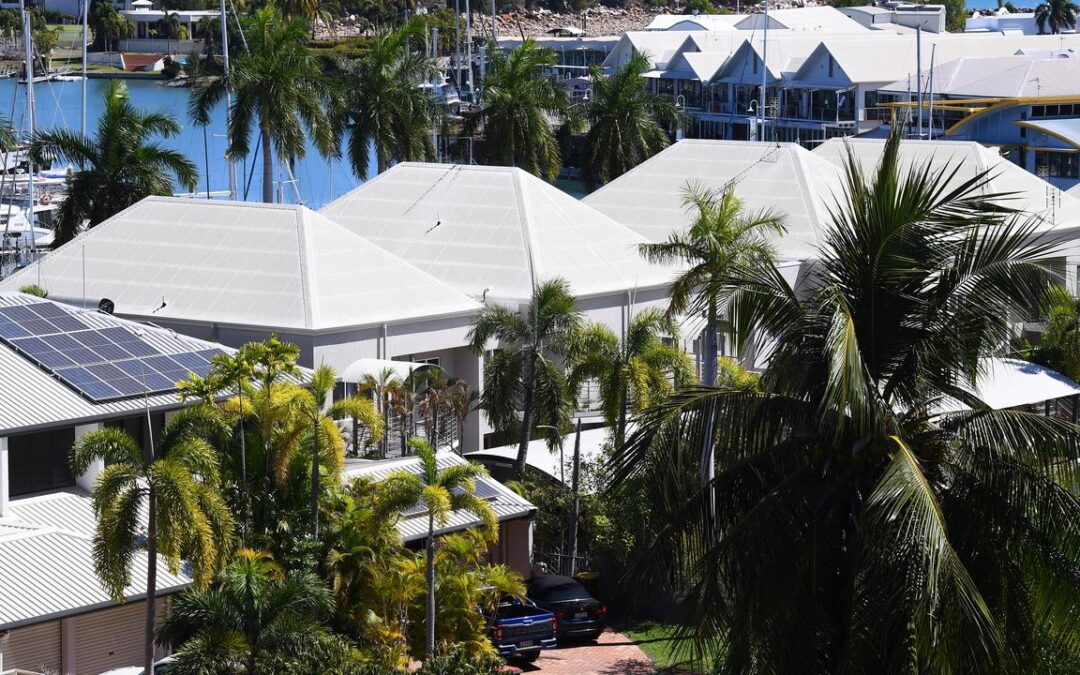
‘No-brainer’ to end negative gearing on holiday rentals
Treasurer Jim Chalmers faces a fresh push to scale back tax concessions for property investors that advocates say would align with the government’s mission to address intergenerational inequity.
Curbing negative gearing and reducing the capital gains tax discount on short-stay rentals like Airbnbs could save taxpayers more than $500 million per year in concessions, according to a report released on Monday by affordable housing advocacy group Everybody’s Home.
It would also ease the pressure on renters in holiday hot-spots finding it increasingly difficult to find a home in their community.
The change is seen as potential “low-hanging fruit” for Dr Chalmers, who has flagged an openness to review the tax system to make it fairer for younger Australians, who currently bear a greater tax burden than asset-rich older Australians.
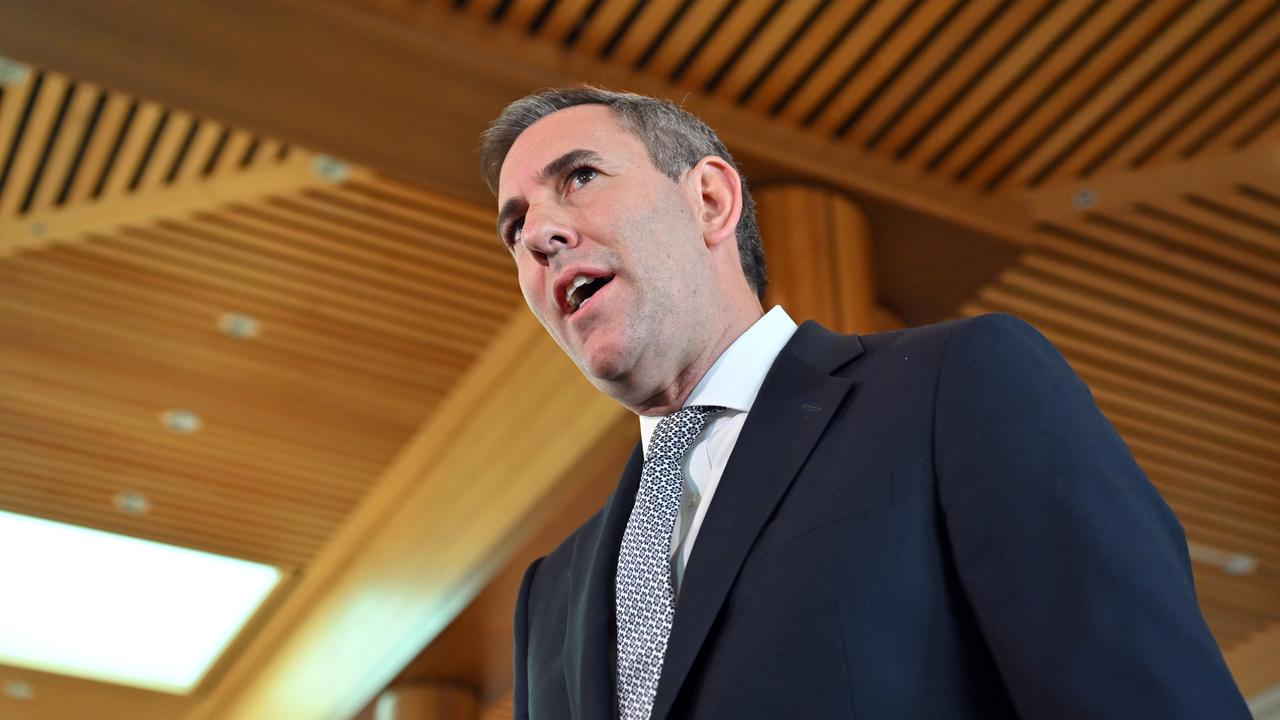
The report has garnered support among parliamentarians; a vocal group has long advocated that Labor winds back negative gearing and the capital gains discount, which boosts investor demand for property and makes it harder for first home buyers to enter the market.
A briefing hosted by Everybody’s Home last week was attended by about 15 federal parliamentarians, including Labor backbenchers and independent Senator David Pocock.
Senator Pocock, who has long called for a cap on negative gearing to just one investment property, acknowledges there is an argument the concession helps boost long-term rental supply.
But there are no excuses to keep it on short-stay rentals.
“This is sort of a no-brainer, where we’d be saving a lot of money, which could go into consolidated revenue and allow the government to actually spend more on social housing,” he told AAP.
“That seems the height of intergenerational inequity, where you’ve got people who can’t find a rental or can’t afford a rental and you’ve got other people who have holiday homes who we’re allowing them to negatively gear. I don’t think there’s a public good argument there.”
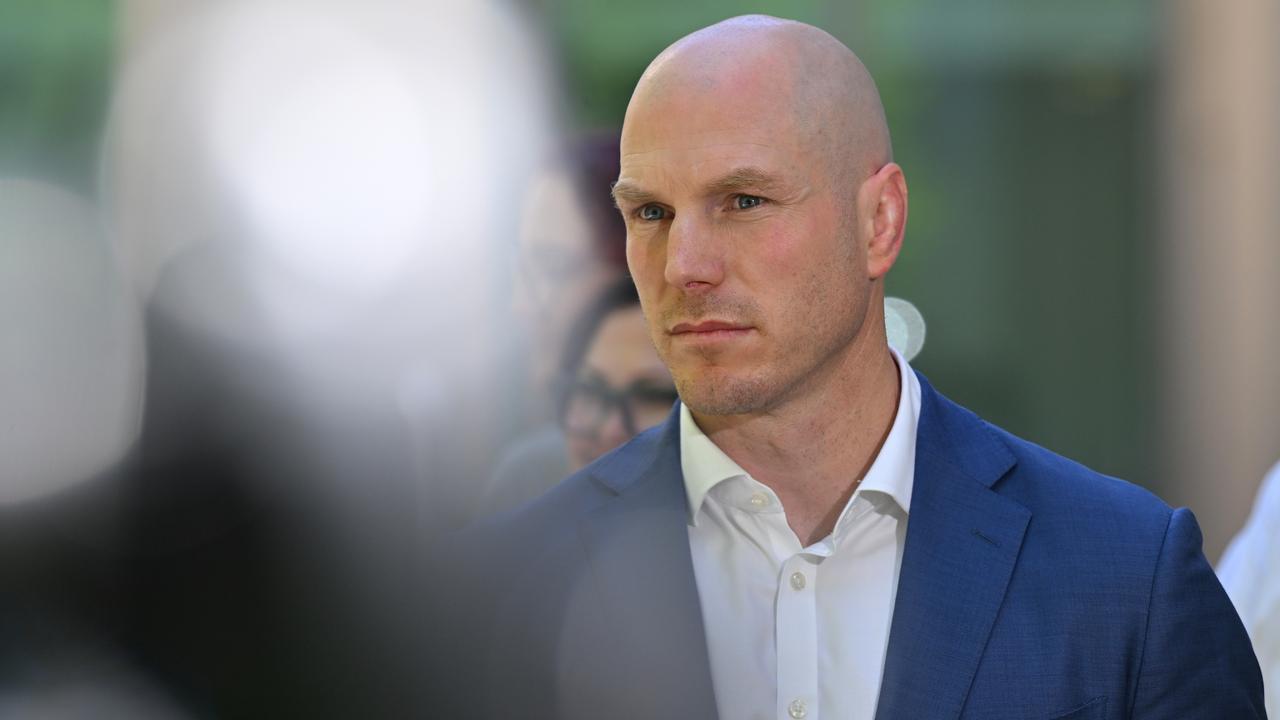
Everybody’s Home spokesperson and report author Maiy Azize said in many parts of the country, short-stay rentals are squeezing people out of their communities.
“Curbing investor tax breaks for holiday lets is one of the fastest and fairest ways to free up funding for the homes we need,” she said.
“If we close these loopholes, the savings could help build more desperately needed low-cost, long-term rentals.”
The report estimates 167,955 entire homes are operating as short-stay accommodation instead of long-term rentals across Australia.
If just one in 10 were negatively geared, the annual cost to the budget is estimated to exceed $111 million. That figure jumps to $556 million in lost revenue each year if half of short-stay investors claim negative gearing deductions.
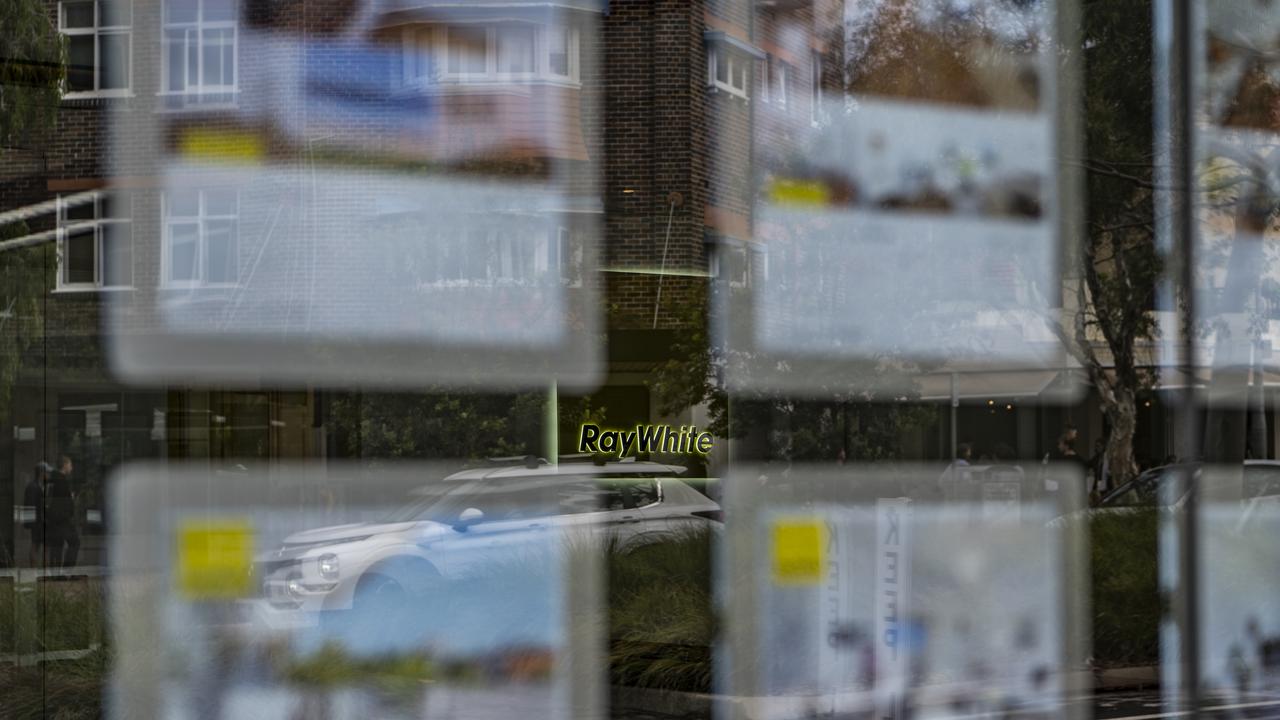
A spokesperson for the treasurer said the government had not changed its policies or position on negative gearing.
Dr Chalmers has consistently said he has no plans to change negative gearing or the capital gains discount and the government’s focus this term is on implementing tax changes it brought to the last election, including income tax cuts and higher taxes on super earnings.
Housing is a defining challenge in Australia’s economy, the spokesperson said, listing several measures aired at the recent economic roundtable to boost home-building, like freezing the national construction code and fast-tracking applications for environmental approval.
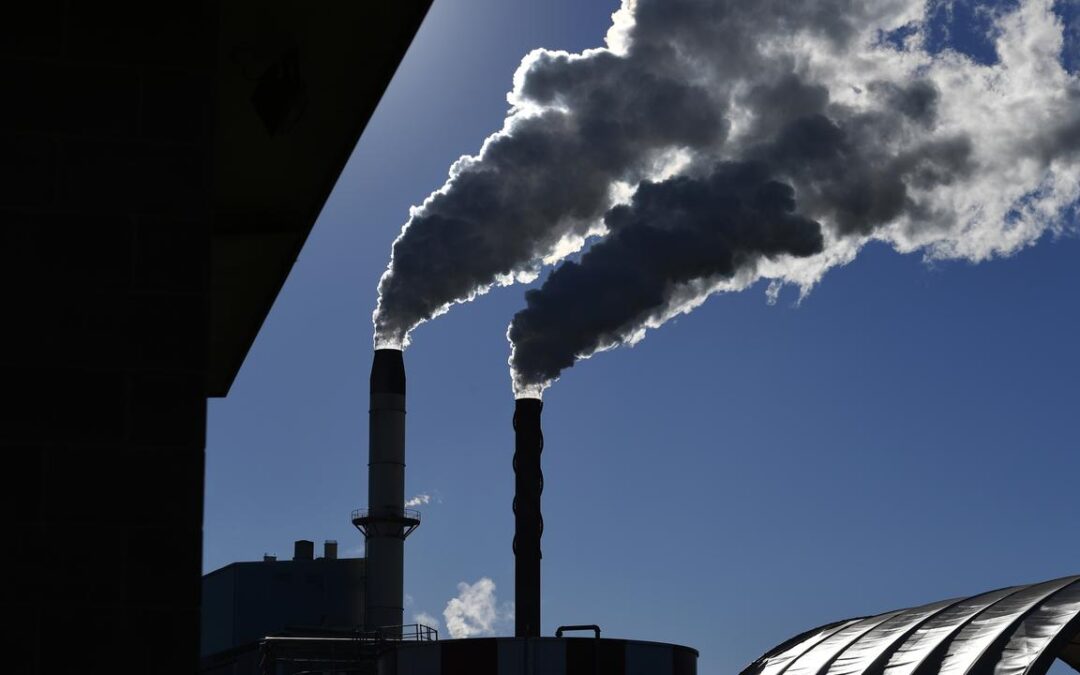
‘World is watching’: high bar for 2035 climate goals
Australia is being urged to trace a pathway away from fossil fuel exports and temper its use of land carbon sequestration to meet emissions targets.
With just a month to go before the federal government must reveal its 2035 emissions target and updated plans to contribute to global temperature goals, leading global think tank Climate Analytics has joined the call for an ambitious policy refresh for Australia.
The Berlin-based outfit, headed by climate scientist Bill Hare, calls for a net emissions reduction target of 81 per cent below 2005 levels by 2035.
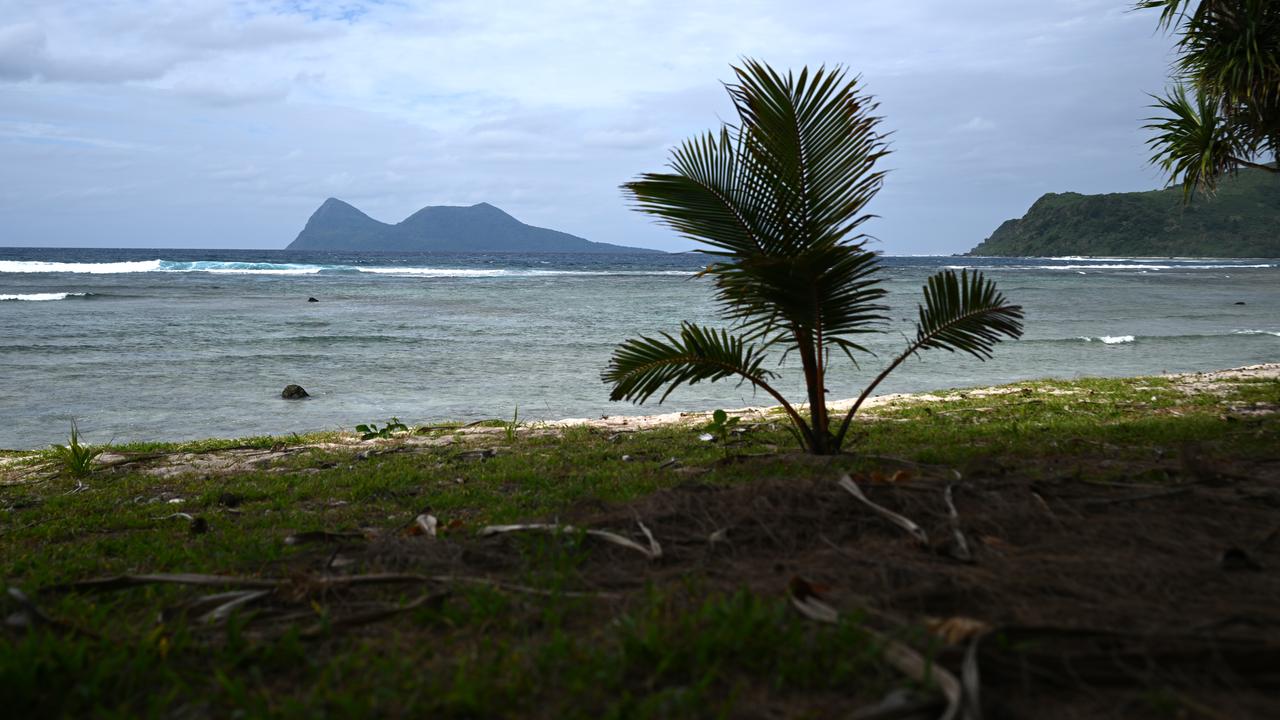
It also wants the 2030 target of a 43 per cent reduction upped to 72 per cent.
Dr Hare views these goals as ambitious but “technologically and economically feasible”, and importantly aligned with limiting warming as close as possible to the Paris Agreement’s 1.5C limit.
“The world will be watching Australia’s target as the government bids to co-host next year’s climate talks with Pacific Island countries whose very existence is threatened by warming exceeding 1.5C,” he said.
The 2035 emissions-reduction recommendation exceeds the 65 per cent to 75 per cent range flagged by the Climate Change Authority, the independent body set up to advise the government on climate matters.
The federal government has heard from advocates of both the upper and lower ends of this limit – and either side – with environmental groups favouring ambitious goals while some business groups angle for temperance.
The latest emissions figures suggest Australia is broadly on track to meet its 2030 climate goals.
But Climate Analytics wants the government to taper its reliance on land sector sequestration to meet emissions goals and improve the transparency of these cuts.
Land is a viable carbon sink and planting trees, restoring wetlands and other management techniques are useful in the fight against climate.

But the think tank says relying on land sequestration is obscuring a lack of action across other sectors.
Net emissions, which include land sequestration, have fallen 29 per cent between 2005 and 2024, while gross emissions have only sunk two per cent.
Fossil fuel exports do not fall under the scope of nationally determined contributions outlined by the Paris Agreement, but the analysts say Australia still has an obligation to phase them out, a requirement spelled out clearly in a recent International Court of Justice advisory opinion.
Dr Hare said Australia must break free from the “drug dealer defence”, that is, the argument that if it stops supplying fossil fuels, other countries will do so in its stead, so it might as well continue.
Signatories of the Paris Agreement must provide updated contributions to world temperature goals every five years.
Australia and several other states are yet to produce their updated targets ahead of the next climate talks in Brazil in November, and late September has been flagged as a hard deadline.
Debate about the Labor government’s emissions targets continues as the federal coalition’s commitment to net zero wavers, with some members of the opposition pushing to ditch the overarching 2050 goal entirely.
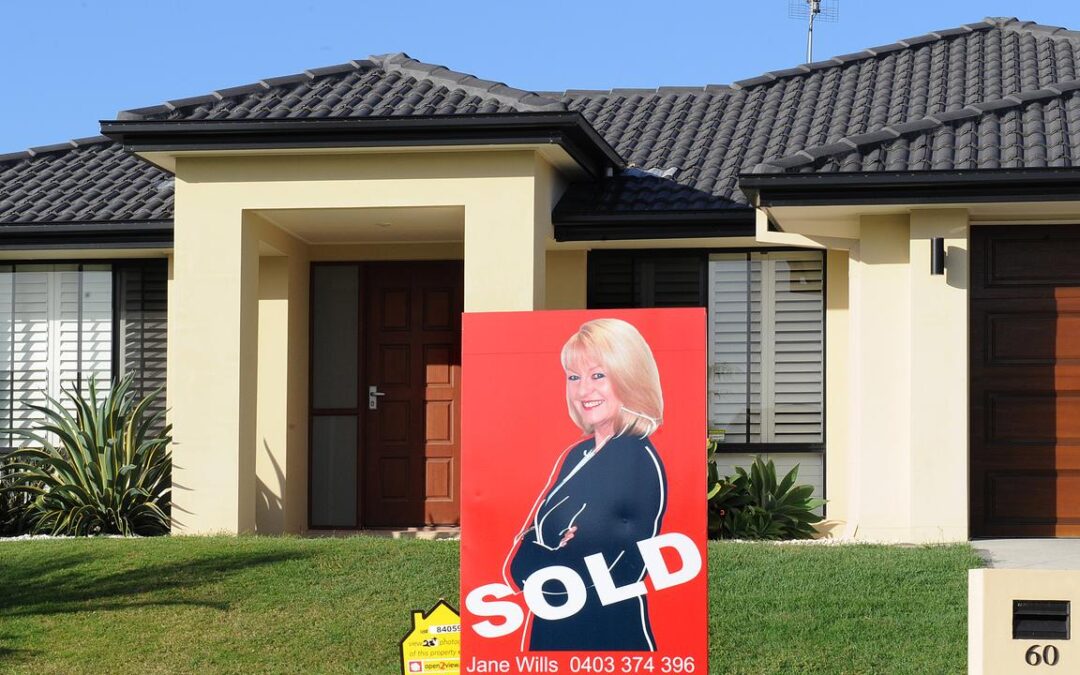
Home prices bloom with spring sellers on solid ground
Australia has clocked its strongest month of house price growth since May 2024, with a 0.7 per gain cent in August.
The result lifts the annual change in dwelling values to 4.1 per cent in a second consecutive monthly rise, according to Cotality’s home value index.
Research director Tim Lawless says the cycle has been gradually building since February’s rate cut, with demand spurred by a lift in borrowing capacity, wages growth, confidence and urgency as advertised stock levels remain tight.
“Once again we are seeing a clear mismatch between available supply and demonstrated demand placing upwards pressure on values”, he said.
“The annual trend in estimated home sales is up two per cent on last year and tracking almost four per cent above the previous five-year average.”
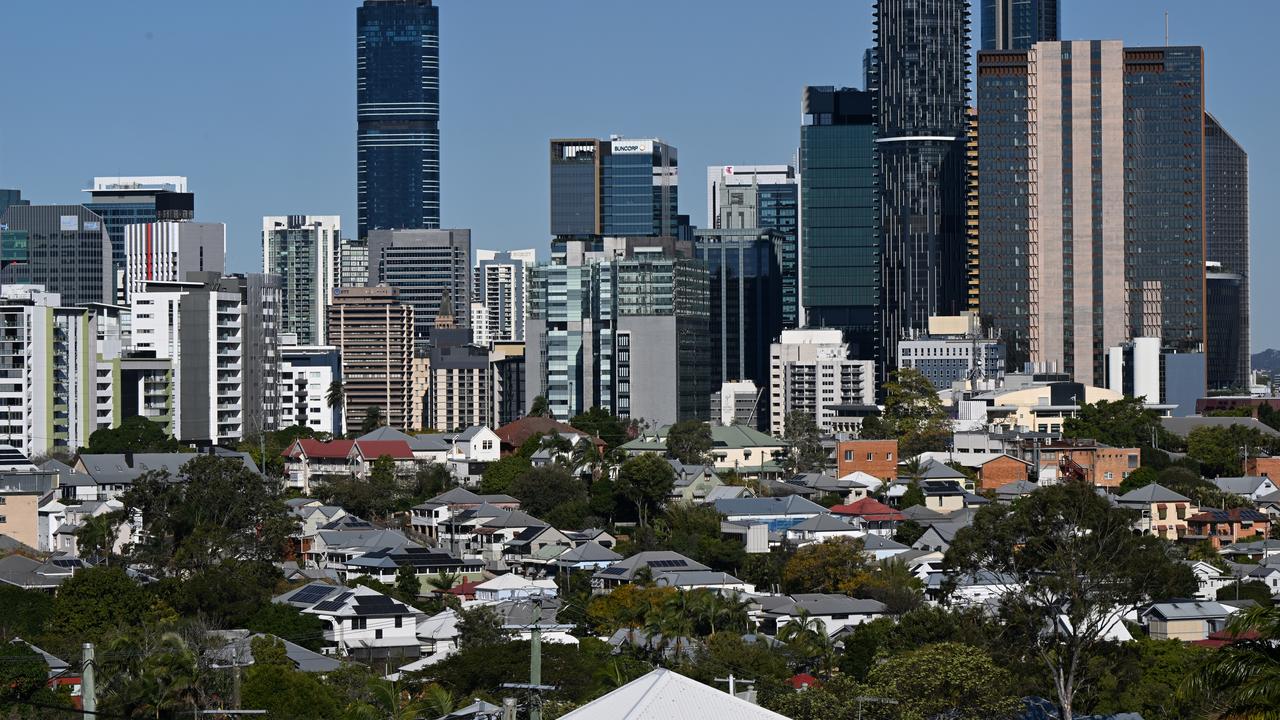
At the same time, advertised supply levels remain about 20 per cent below what is considered average for this time of year.
Mr Lawless says vendors are in a strong position as spring gets under way.
Auction clearances climbed to a 20-month peak of 70 per cent in August and competition amongst sellers is comparatively mild.
“We are starting to see the usual start of spring upswing in new listings coming to market but from a low base,” he said.
“A pick up in the flow of stock … will be good news for buyers who generally have limited choice at the moment.”
Cotality found nearly every Australian region recorded a rise in values over the month, with Tasmania’s drop of 0.2 per cent the exception.
Mid-sized capitals continue to lead the way, with August’s highest gains reached by Brisbane at 1.2 per cent and Perth at 1.1 per cent.
Adelaide wasn’t far behind with a 0.9 per cent lift in August, while Sydney came in at 0.8 per cent and Melbourne 0.3 per cent.
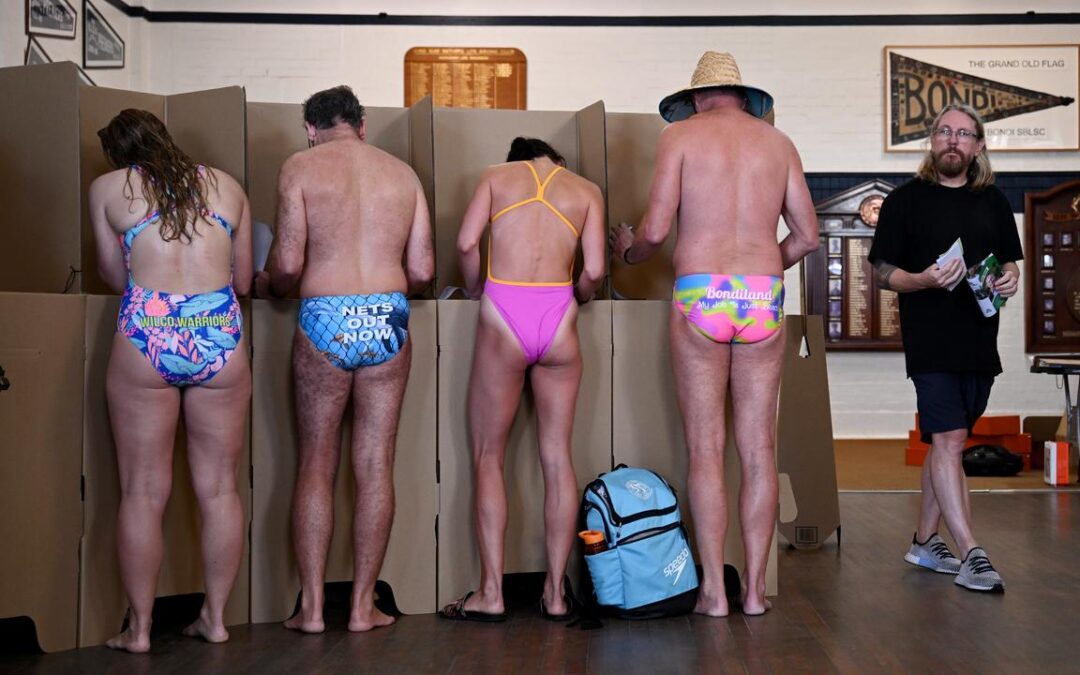
It’s not me, it’s you: millions abandon the coalition
Millions of Australians are abandoning the federal coalition as the Liberals continue to review its election drubbing and rebuild a fractured party.
Almost half of voters who previously voted for the coalition, approximately five million people, wouldn’t consider voting for them if a federal election were held now, according to think tank Blueprint Institute.
More than two-thirds of people said they wouldn’t consider giving their first preference to the coalition, which included 44 per cent of former coalition voters, according to the commissioned YouGov poll of 5000 people in July.
“If the coalition is to regain government through an improvement in the primary vote, it will need to do more than appeal to its base or convince undecided voters,” the Blueprint Institute’s report, Winning Back the Coalition’s Missing Middle, found.
“It must expand the number of people who are willing to consider its candidates as an option.”
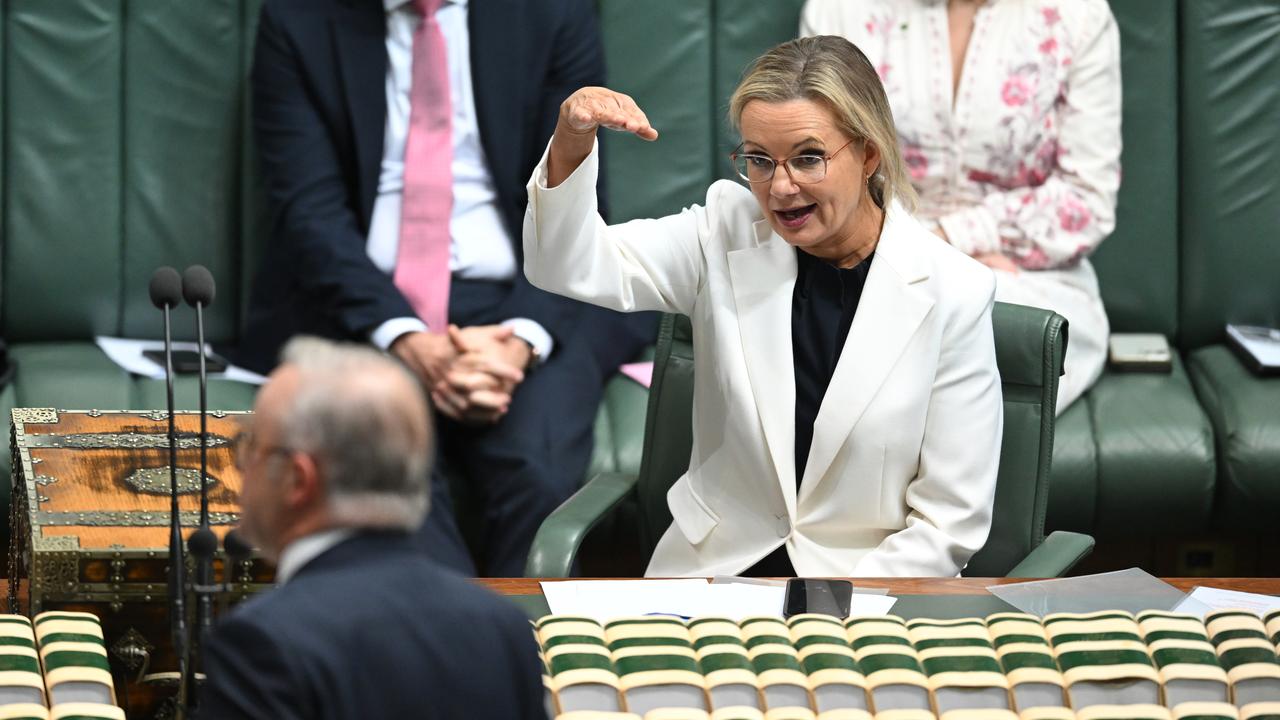
Half of those who had voted for the coalition but not at the 2025 election were critical of climate change, renewable energy and housing affordability policy offerings.
Only 16 per cent of former supporters believed the conservative alliance was serious about addressing climate change.
The research presented more dire news, finding that there was an “extremely limited opportunity to increase its primary vote among those who would currently consider voting for one of its candidates”.
Four in five ex-coalition voters and just over 70 per cent of independent voters agreed the Liberals and Nationals needed a more comprehensive policy suite before they stood a chance to pick up their vote.
Climate change policies were identified as a key area to address a disconnect with voters, as more than half of ex-voters wanted them to keep their commitment to a net-zero emissions target.
The Liberals and Nationals are split on the net-zero by 2050 target, with more conservative and firebrand members wanting the commitment scrapped.
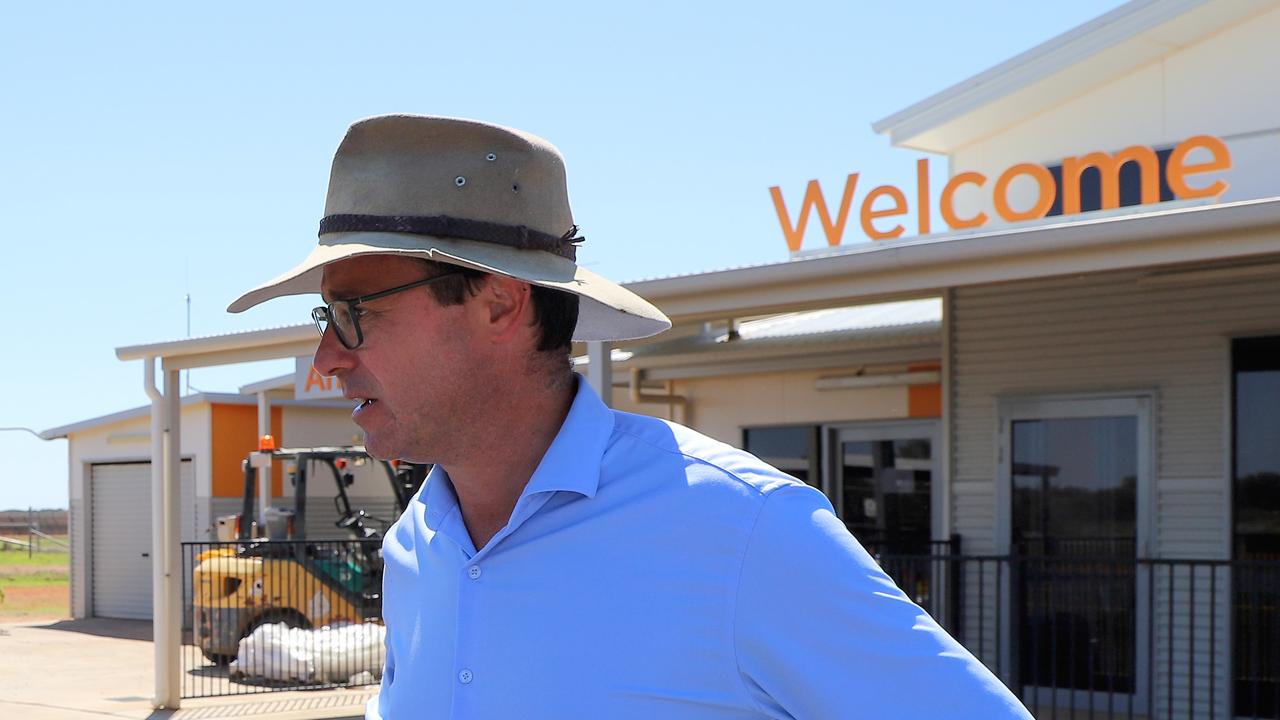
But inner city and moderate Liberals who have called for stronger climate action policies have been largely eradicated from metropolitan areas across the country.
The coalition fared well on economic management, national security and foreign affairs, which overlapped with the priorities of their former supporters.
Those who left the conservative parties were predominantly parents with young children and full-time workers in their twenties to forties, the survey found.
Blueprint Institute co-founder Lachlan Crombie said the coalition would need to gain a broad appeal to voters rather than just a narrow sliver.
“That means appealing to young families who are not particularly ideological, but have turned away from the coalition because it’s drifted away from representing the values of modern Australia,” he said.
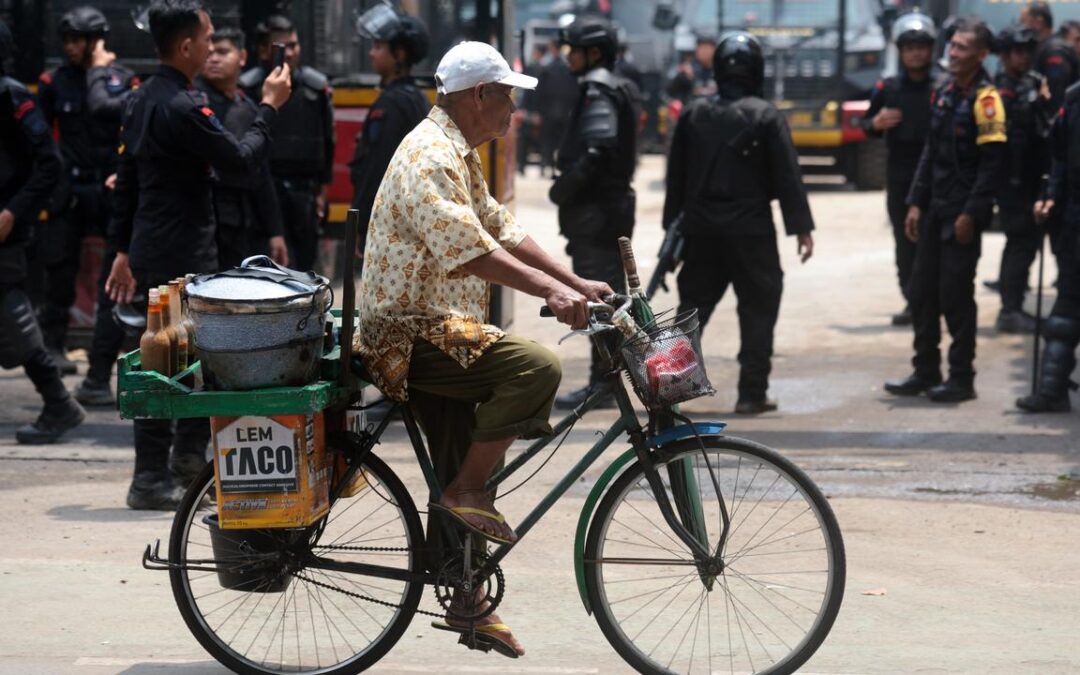
Indonesian leader to revoke MPs’ housing perks
Indonesia’s President Prabowo Subianto has pledged to revoke lawmakers’ perks and privileges, including a controversial $US3,000 ($A4,587) monthly housing allowance, in a bid to ease public fury after nationwide protests left six people dead.
Flanked by leaders of eight Indonesian political parties, Subianto told a televised news conference in the capital, Jakarta, that they had agreed to cut the housing allowance and suspend overseas trips for members of parliament.
It was a rare concession in response to mounting public anger.
“Lawmakers will see certain allowances scrapped and overseas work trips suspended under a new moratorium,” Subianto said.
As nationwide protests escalated across the world’s third-largest democracy last week, Subianto summoned the country’s prominent figures and cancelled a high-profile trip to China.
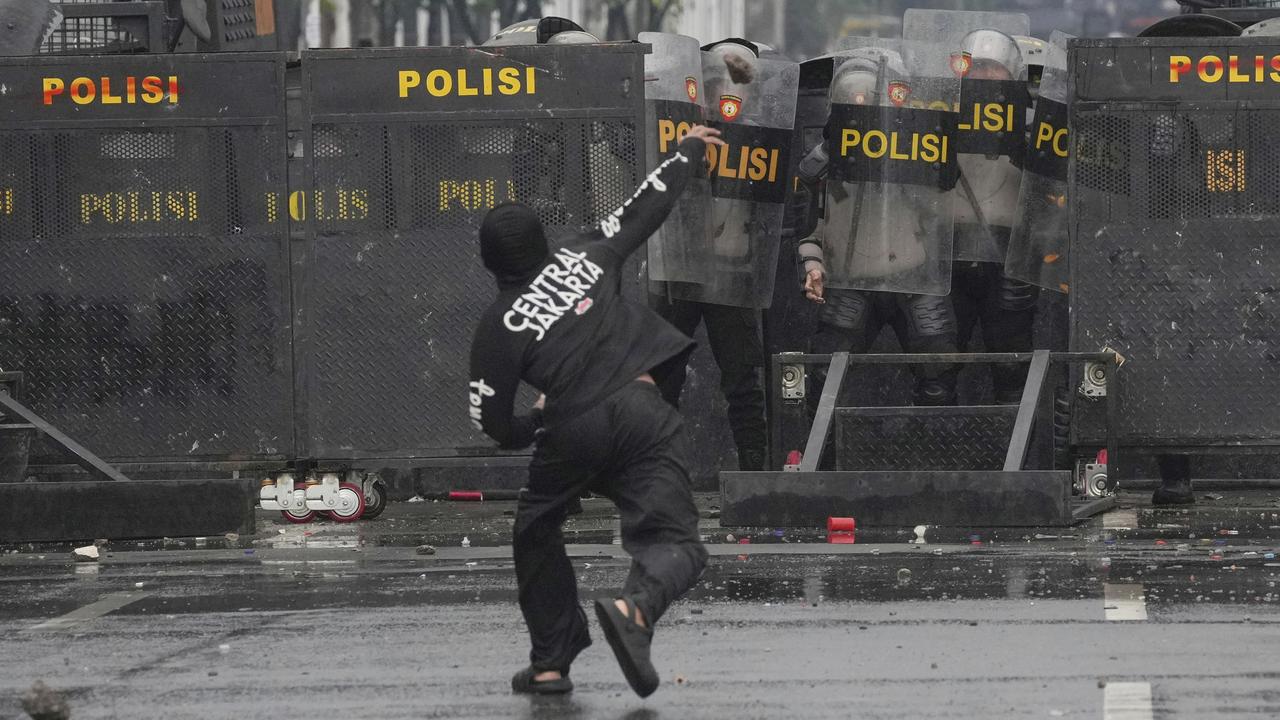
He met with 16 religious figures and eight political leaders, including former President Megawati Sukarnoputri, the chairwoman of the country’s only formal opposition party, the Indonesian Democratic Party of Struggle.
Five days of protests began in Jakarta on Monday, sparked by reports that all 580 MPs receive a monthly housing allowance of 50 million rupiah ($A4,702) in addition to their salaries.
The allowance, introduced last year, is almost 10 times the Jakarta minimum wage.
Critics argue the new allowance is not only excessive but also insensitive at a time when most people are grappling with soaring living costs, taxes and rising unemployment.
The protests grew wider and more violent following the death of 21-year-old ride-hailing driver Affan Kurniawan.
A video on social media, apparently showing his death during a rally in Jakarta on Thursday, shocked the nation and spurred an outcry against the security forces.
Kurniawan was reportedly completing a food delivery order when he was caught in the clash.
Witnesses told local television that the armoured car from the National Police’s Mobile Brigade unit suddenly sped through the crowd of demonstrators and hit Kurniawan, causing him to fall.
Instead of stopping, the car ran over him.
Subianto said police are investigating seven officers linked to the incident.
The death toll from riots that broke out in multiple cities rose to six after authorities in Yogyakarta on Sunday confirmed that Friday’s clashes between rock-throwing demonstrators and riot police killed a 21-year-old university student.
Subianto reiterated that his government respects freedom of expression as guaranteed in Indonesia’s constitution and international conventions.
“But when demonstrations turn anarchic, destroying public facilities, endangering lives, and attacking private homes or public institutions, this becomes a serious violation of law,” he said.
Subianto cautioned that violent acts risk veering into treason and terrorism, and warned “the state would not tolerate attempts to destabilise the country”.
The former general further called on the public to express their aspirations peacefully and constructively, and promised their voices would be heard.
“I sincerely ask all citizens to trust the government and remain calm,” Subianto said.
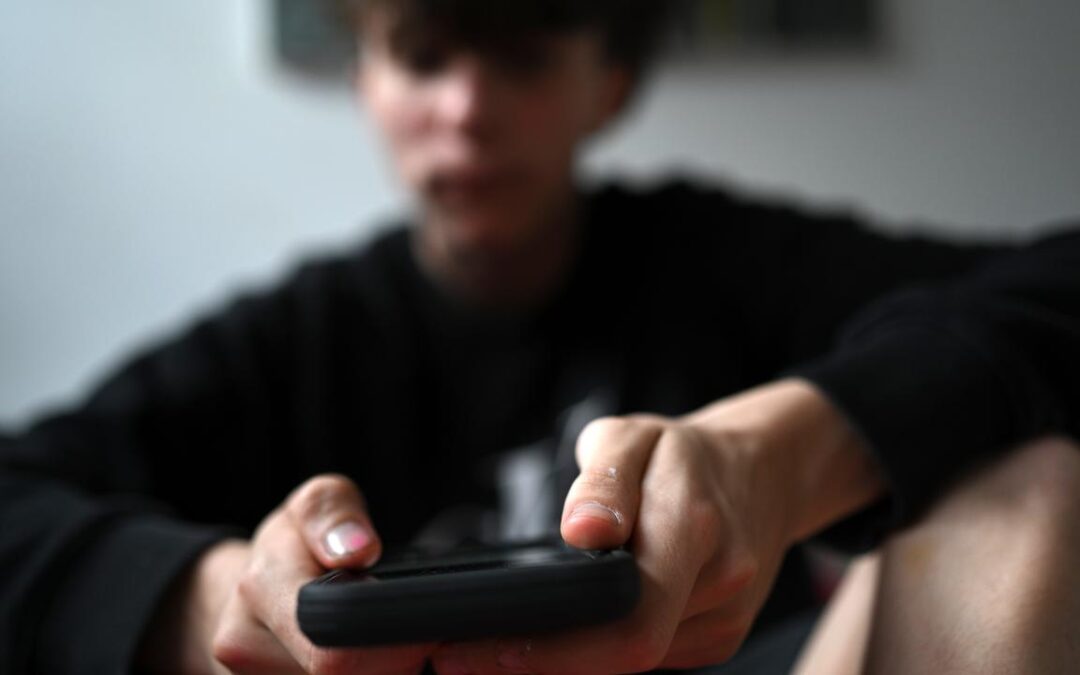
Social media bans and age restrictions ‘can be done’
Parents are being assured their children will be kept safe online as technology used to block kids from social media receives the green light.
An independent trial evaluated ways to verify ages including matching people with documents provided and estimating someone’s age based on physical features and hand movements.
More than 60 tools were assessed as part of the trial, which found technology could be used successfully to prevent Australians accessing explicit and inappropriate content.

Available technologies could ensure age assurance was done “privately, efficiently and effectively” with appropriate limitations.
“Age assurance can be done in Australia,” the experts wrote in a final report published on Monday.
Systems were “generally secure and consistent with information security standards” and could handle prickly issues including AI-generated spoofing and forgeries, members of the Age Check Certification Scheme said.
“However, the rapidly evolving threat environment means that these systems – while presently fairly robust – cannot be considered infallible,” they found.
The report warned unnecessary data retention could occur as tech giants anticipated future regulation.
“We found some concerning evidence that in the absence of specific guidance, service providers were apparently over-anticipating the eventual needs of regulators about providing personal information for future investigations,” it said.
This could lead to increased risk of privacy breaches due to unnecessary and disproportionate collection and retention of data.

The trial was launched after the federal government announced a social media ban for people younger than 16, which will come into effect in December.
Communications Minister Anika Wells said the findings showed there were effective methods that could be used by social media platforms to enforce age limits.
Tech giants could be fined up to $49.5 million for failing to prevent people under 16 from having an account on an age-restricted platform.
The ban captures social media platforms Facebook, Instagram, X , TikTok, YouTube and Snapchat.
“The Albanese government is on the side of families and we’re pushing forward with our mission to keep kids safer online through world-leading reforms,” Ms Wells said.
“This report is the latest piece of evidence showing digital platforms have access to technology to better protect young people from inappropriate content and harm.
“While there’s no one-size-fits-all solution to age assurance, this trial shows there are many effective options and importantly, that user privacy can be safeguarded.”
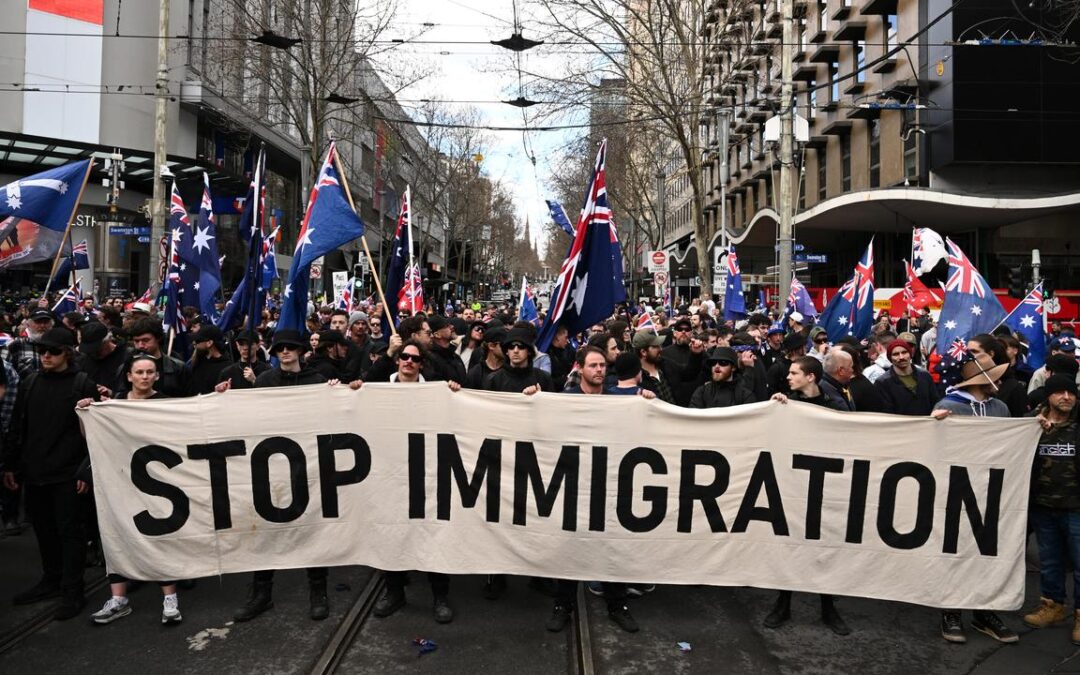
Anti-migration rallies condemned as protesters arrested
Racism and extremism at anti-immigration rallies across Australia have been condemned after a score of arrests following violent clashes.
Tens of thousands of nationalists, dozens of dogs and at least one horse draped in Australian flags and paraphernalia participated in March For Australia rallies on Sunday in major cities including Sydney, Melbourne, Brisbane and Canberra.
Speakers and attendees were at pains to state they were not against immigrants but wanted less migration.
However, rhetoric crossed into racism and xenophobia and became conspiratorial for some, with one speaker in Sydney spouting a theory about “a clear global agenda to shame, beat down and replace people with Anglo-Celtic and European heritage”.
Prominent neo-Nazis also gave speeches in Sydney and Melbourne.
The Australian Council of Social Services condemned hatred, fascism and violence and said it stood with all affected communities.
CEO Cassandra Goldie said the rallies should not provide people a platform “to divide communities or spread misinformation about migration and its impacts”.
“Australia’s diversity is a great strength, not a threat,” she said.
NSW Police estimated some 15,000 people attended the Sydney rally.
They said there were no significant incidents or injuries after hundreds of officers were deployed around the city to cover multiple events, including a marathon.
Officers removed one woman for allegedly breaching the peace in Sydney’s Hyde Park.
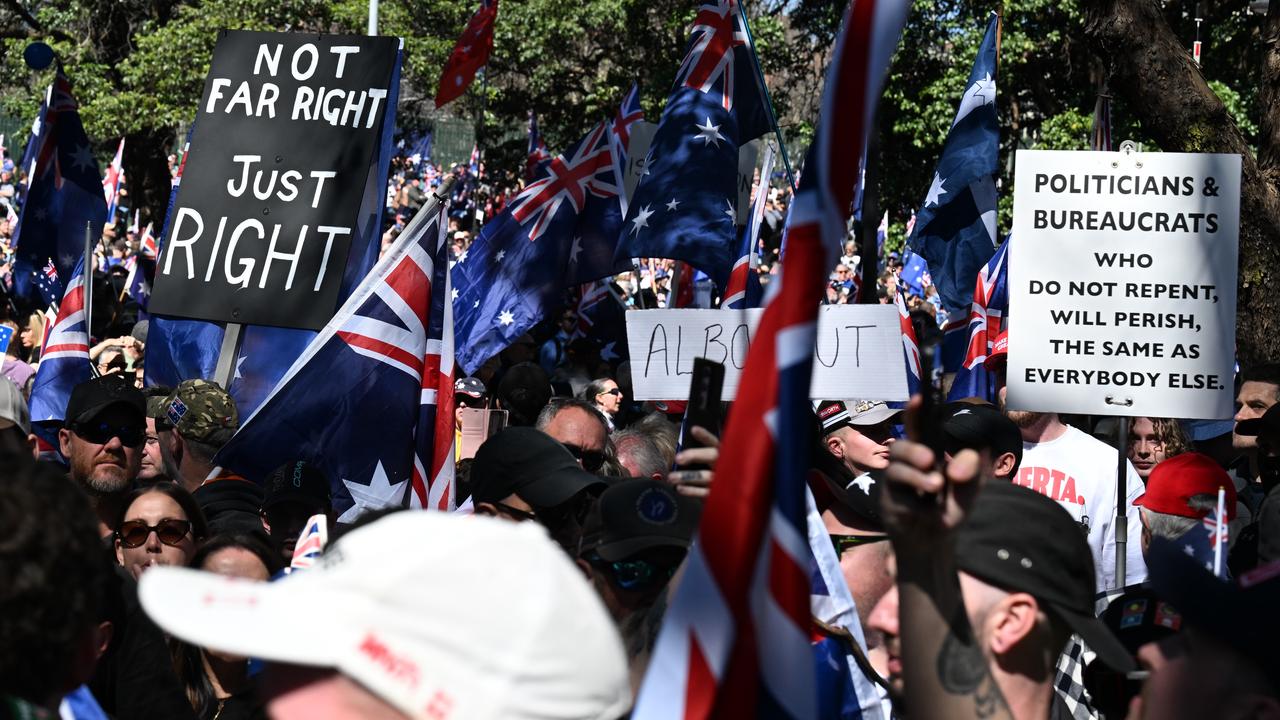
Acting Assistant Commissioner Scott Tanner said he was happy with the crowd’s behaviour, with everyone following instructions.
It was a different story in Melbourne, where violence erupted between competing rallies.
Officers were forced to use pepper spray to break up clashes between anti-immigration marchers and anti-fascist and pro-Palestine protesters.
Victoria Police said six people were arrested and face charges of assaulting police, behaving in a riotous manner, attempted robbery, assault and resisting police.
Two officers were injured after being struck by bottles thrown at them.
Victoria Police estimated the crowd size to be 5000.
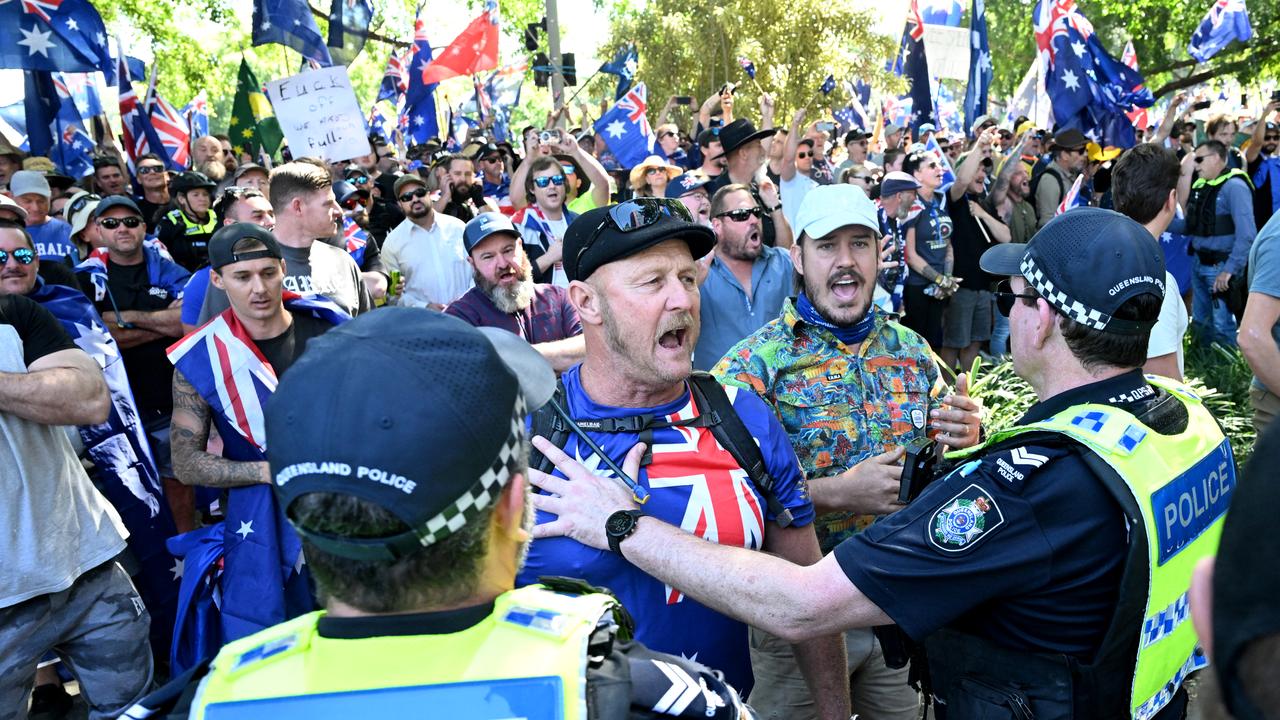
In Brisbane, one man was arrested and charged with assaulting police while another man was detained for breaching the peace.
Queensland Police said about 6000 protesters attended the Brisbane rally.
Far right firebrand Pauline Hanson spoke to hundreds at a rally outside Parliament House in Canberra, calling for reduced migration and more Australian pride.
The One Nation leader’s speech then pivoted into a soliloquy that denied climate change and decried Indigenous Welcome to Country ceremonies and a “woke agenda” being forced on children in schools.
More than 100 Canberrans took aim at fascism and racism, chanting “f**k off Nazis, f**k off”, “go home white trash” and “immigrants are welcome here” as people congregated at Commonwealth Park before marching to Parliament House.
Cabinet minister Murray Watt, who condemned the protests, said “the fact that this is being organised and promoted by neo-Nazi groups tells us everything we need to know about the level of hatred and division that these kind of rallies are about”.
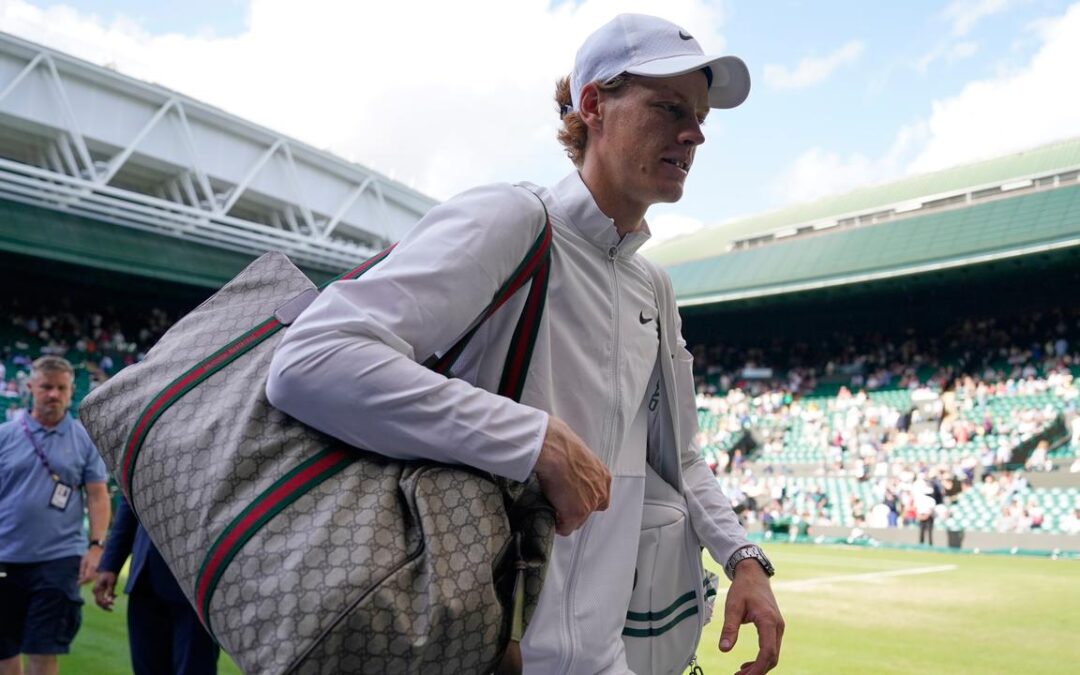
Tennis fashion is exploding at the US Open
Before New York Fashion Week kicks off in Manhattan, some brands are making an early pit stop elsewhere — out in Queens, on the blue hard courts of the US Open.
Just four days separate the two cross-town spectacles, which are beginning to have more in common than ever before.
In a sport where brands like Nike and Adidas were once the only players, the logos of Gucci and Miu Miu have started to weave their way in.
Tennis fashion has been surging, and the luxury fashion industry doesn’t want to feel left out.
Luxury fashion partnerships in the tennis world have historically been somewhat sparse.
They’ve been testing the waters in recent years, and lately, the deals have been flowing — Bottega Veneta with Lorenzo Musetti, Burberry with Jack Draper, Canali with Stefanos Tsitsipas and Dior with Zheng Qinwen have all come since January.
Coco Gauff wore tennis dresses partially designed by Miu Miu for three tournaments this summer.
“Fashion helps bring casual fans to the sport,” she said.
And top-ranked Jannik Sinner has often carried a Gucci tennis bag onto the court since their partnership began in 2022.
The collaborations are multiplying. And they’re causing a buzz.
When Musetti debuted as a Bottega Veneta ambassador, the brand’s first athlete, by wearing their white jacket at Wimbledon this summer, both the sports and fashion worlds were taken.
“It was really cool because every magazine, every fashion magazine was talking about it,” Musetti said.
“I think the tennis courts can also be a stage.”
Tennis’ increasing cultural capital has made the sport just that — a stage — for players and fans alike.
But luxury fashion brands are flocking in for more than just its recent popularity.
“Tennis is a marketer’s dream, because it crosses so many demographics and still has prestige,” said Meeta Roy from the Fashion Institute of Technology in New York.
“That (is) the challenge of the luxury brand business model as it exists today: How do you keep your core high net worth individuals? But also, so much of the revenue is driven by those that are interested in accessible luxury. Oftentimes, you have a two-tiered marketing strategy for the different groups. … But tennis is this place where it can all exist together.”
The sport’s historical association with the wealthy, coupled with its skyrocketing general popularity, is making its courts the perfect marketing opportunity for the luxury space.
It doesn’t hurt that the pro tour runs through many major cities across the globe, and there’s also the simple fact of “quite a lot of sex appeal,” according to Stuart Brumfitt, editor of tennis lifestyle magazine Bagel.
“With this younger era (of players), they’ve all got huge social media followings. … They’ve got a lot of reach,” he said.
“Because it’s an individual sport, they don’t get lost in the team. If (a brand) backs that person, they get all of their audience.”
It’s that diverse reach that makes the US Open rival the other big show in town — New York Fashion Week, which begins on September 11 — from a marketing perspective.
“Anyone who’s looking at content from a brand’s runway shows they’re already a fan of the brand. But when Musetti is busting out the (Bottega Veneta jacket) for the world, that’s a completely different audience,” Roy said.
“It’s all about attracting the non-traditional fashion customer.”
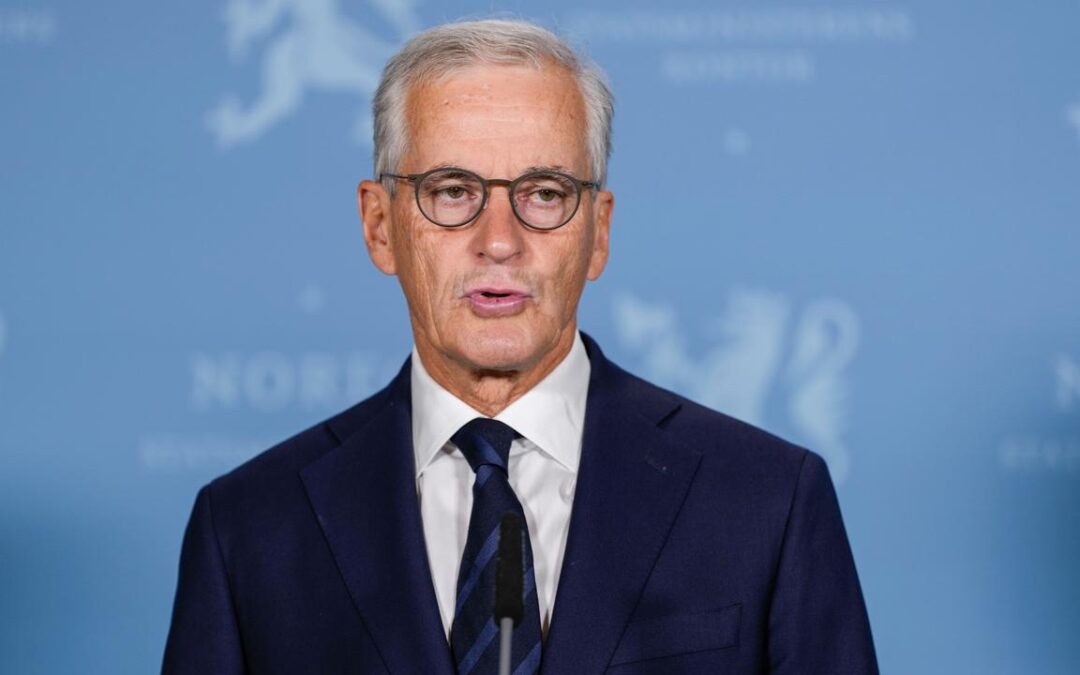
UK frigates to boost Norway’s navy in $20 billion deal
Norway has chosen Britain as its strategic partner for the acquisition of new frigates in its biggest ever military investment, in a deal worth some $US13.51 billion ($A20.66 billion), to boost the Nordic country’s maritime defence.
Germany, France, Britain and the United States had offered rival frigate designs in competition.
“The frigates are an essential part of our defence because they are key to defend our sovereignty,” Prime Minister Jonas Gahr Stoere told reporters on Sunday.
Norway is NATO’s monitor for the vast two-million-square-kilometre area of the North Atlantic used by the Russian northern fleet’s nuclear submarines.
A key mission for the frigates will be to monitor Russian submarines, whose base is on the Kola Peninsula, an area in the Arctic bordering Norway.
British Prime Minister Keir Starmer welcomed the deal, which will eventually see a combined fleet of 13 anti-submarine warfare frigates – eight British and at least five Norwegian – operate jointly in northern Europe, he said.
British officials, seeking economies of scale for their own navy and to boost Scotland’s shipyard industry, had heavily promoted the BAE Systems’ frigates, known as the T-26 City-class.
The deal would support 4000 jobs across the United Kingdom, including more than 2000 in Scotland, the British government said.
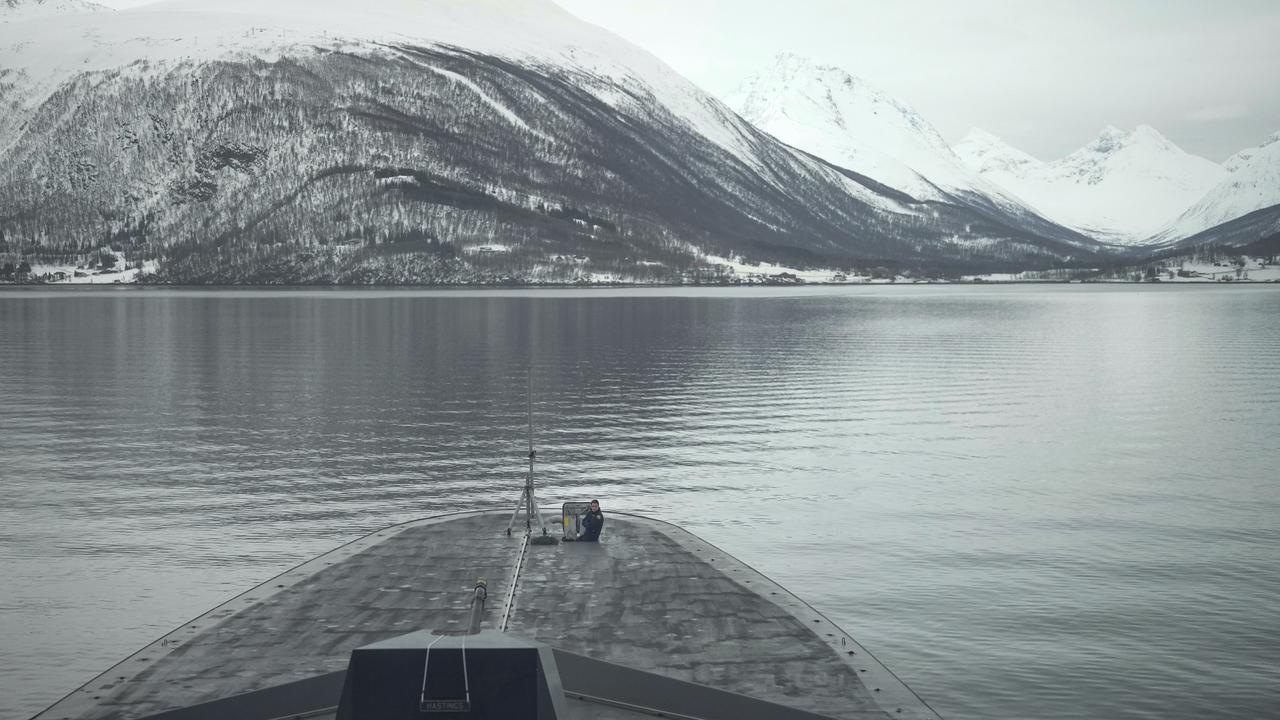
Norway shares a border with Russia and is ramping up defence spending in light of Moscow’s invasion of Ukraine and US President Donald Trump’s demand that NATO allies must bolster their own military strength.
The draft agreement with Britain also guarantees industrial co-operation with Norwegian industry equivalent to the total value of the acquisition, the Norwegian government said.
Norway, a nation of 5.6 million people, currently operates four frigates.
It previously said it could order five frigates, with an option for an additional one.
“This will be the biggest purchase to date. And we are now entering final contract negotiations,” Gahr Stoere said.